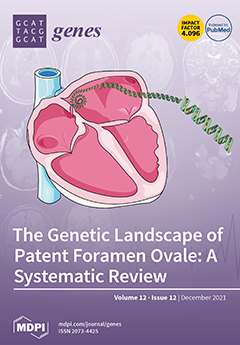Protein synthesis (translation) is one of the fundamental processes occurring in the cells of living organisms. Translation can be divided into three key steps: initiation, elongation, and termination. In the yeast
Saccharomyces cerevisiae, there are two translation termination factors, eRF1 and eRF3.
[...] Read more.
Protein synthesis (translation) is one of the fundamental processes occurring in the cells of living organisms. Translation can be divided into three key steps: initiation, elongation, and termination. In the yeast
Saccharomyces cerevisiae, there are two translation termination factors, eRF1 and eRF3. These factors are encoded by the
SUP45 and
SUP35 genes, which are essential; deletion of any of them leads to the death of yeast cells. However, viable strains with nonsense mutations in both the
SUP35 and
SUP45 genes were previously obtained in several groups. The survival of such mutants clearly involves feedback control of premature stop codon readthrough; however, the exact molecular basis of such feedback control remain unclear. To investigate the genetic factors supporting the viability of these
SUP35 and
SUP45 nonsense mutants, we performed whole-genome sequencing of strains carrying mutant
sup35-n and
sup45-n alleles; while no common SNPs or indels were found in these genomes, we discovered a systematic increase in the copy number of the plasmids carrying mutant
sup35-n and
sup45-n alleles. We used the qPCR method which confirmed the differences in the relative number of
SUP35 and
SUP45 gene copies between strains carrying wild-type or mutant alleles of
SUP35 and
SUP45 genes. Moreover, we compare the number of copies of the
SUP35 and
SUP45 genes in strains carrying different nonsense mutant variants of these genes as a single chromosomal copy. qPCR results indicate that the number of mutant gene copies is increased compared to the wild-type control. In case of several
sup45-n alleles, this was due to a disomy of the entire chromosome II, while for the
sup35-218 mutation we observed a local duplication of a segment of chromosome IV containing the
SUP35 gene. Taken together, our results indicate that gene amplification is a common mechanism of adaptation to nonsense mutations in release factor genes in yeast.
Full article






